6 A Village Emerges
Most residents of Skokie are pleased with the quality of local services they receive in return for their tax dollars. Some longtime residents, however, will surely recall that this situation did not come about easily.
Skokie’s current governmental structure was inaugurated in 1957, when village residents voted overwhelmingly to adopt the Council-Manager form of government. Approximately 30 other Chicago suburbs had already made similar decisions, but the change in Skokie’s administration was not without incident.
In the early and middle 1950s, the government of the village was organized much as it had been immediately following the incorporation of 1888. The Village Board and Board President controlled the political appointments in village government, and many were little more than patronage jobs. A series of scandals subsequently rocked the police department, the fire department, the building department, as well as other areas of local government.
In 1955, the North Central Home Owners Association, a group that had gained some political experience working in school board caucuses, met to discuss the wide variety of problems that Skokie’s village government faced.
In January 1956, Home Owners Council chairman Ray Jackson held a public meeting in his home. He invited all interested persons, but especially sought the attendance of the presidents of the various homeowner associations active in the village. During the meeting, a 10-member committee was formed to study a change to the Council-Manager form of government for Skokie. The committee split into two groups, one to work for a referendum installing a Village Manager in the 1957 elections, the other working to promote a new political party to slate a set of candidates during the same election.
The reason for a new political party with its own slate of candidates, the home owners realized, would only work efficiently if it had the support of the Mayor and the Board of Trustees. So the Skokie Caucus Party was established in an attempt to elect reform-minded officials.
With the elections of 1957, the fears of leaders of the new Caucus Party were realized. Although the referendum creating the office of Village Manager passed by a wide margin, officials opposed to it, including first-term Mayor Ambrose Reiter, were all elected.
“The great irony,” former Skokie Corporation Counsel Harvey Schwartz recalled in 1987, “was that here were the incumbents re-elected who opposed the Village Manager and they were now compelled by law to institute the Village Manager form of government. As you might expect, they did so reluctantly, and, as a result, the first manager resigned.
“This same group of politicians selected a man by the name of Bernard “Ben” Marsh to act as the new manager. He came from a small community out East and literally reshaped the government of Skokie. I think everyone would admit that the Ben Marsh imprint continues to this day. The incumbents thought
that they were getting a naive, unsophisticated farm boy. When he came to Skokie, he gave every impression of being just that, naive and unsophisticated, right down to his white socks. But he had the background, the education, and most importantly, the desire and will to do the job and make changes. And change he did.”
Ben Marsh began his work by forcing a number of allegedly corrupt village employees out of office. One of the best-known cases involved a police official who was accused of taking a personal check as a bribe from a drunk driver. He, along with several village building inspectors, was forced out of office by Marsh.
At the same time that Marsh was sending a message to village employees about the consequences of corruption, he also began replacing village officers with trained professionals. The key to his success was found in the powers of the Village Manager, as outlined in Illinois state law. Under that statute, the manager is given the authority to dismiss and appoint the top officials of the various departments of village government, with the exception of the Legal Department.
Ben Marsh continued his fight to professionalize village departments, with at best lukewarm support from the Mayor and the Board of Trustees, until 1959, when a major scandal once again blemished Skokie’s government. That year, largely as a result of investigations conducted by members of the Caucus Party, it was brought to the public’s attention that some construction contracts involving relatively large amounts of money for a major overhaul of the interior of Village Hall had been issued without first having obtained competitive bids, as required by law. Harvey Schwartz recalled that the investigation uncovered the fact that ordinary wastebaskets had been purchased at what appeared to be extraordinary prices, among various other abuses.
The scandal, as well as other problems in the police, fire, and building and zoning departments, resulted in the election of three Caucus Party trustees in 1959. These three new members of the village board—William Siegel, G. Ray Jackson, and Albert J. Smith—were known as “The Three Honest Men,” but they did not control enough votes by themselves to overcome the members of the incumbent party on the Board, which outnumbered them, 4-3. Mayor Reiter, however, decided to vote with the new Caucus Party trustees, thus opening the doors to a revolution in Skokie government affairs.
One of the first areas of reform was in the village fire department. So important in the incorporation of the original Niles Centre, the department, by the early 1950s, was in what could only be described as scandalous condition. A tragic example shook the community when the wife and two children of a member of the fire department were burned to death in a fierce blaze that went unchecked partly because of a faulty fire hydrant.
Under new fire department leadership, a result of the reform, all hydrants were inspected and repaired or replaced. A new fire station was also built at 9024 Gross Point Road to augment the older station on Hamlin, and more men and equipment were added. And a booster pump was added to the village water system, providing more pressure to fight fires and ending restrictions on summer water use by Skokie residents. All of these reforms were accomplished without additional funding.
Around the same time, professional health and legal departments were established. These changes, goals of the Caucus Party, were made while balancing the budget and without an increase in taxes.
In June 1960, voters approved a referendum to establish a Court of Record, the village’s first such legal institution, in which proceedings were thoroughly transcribed. Two Caucus Party judges and a clerk were elected to the court in December. By the following month, the three Caucus Party trustees and Mayor Reiter withstood some local pressure and paved the way for the arrival of Skokie’s first black residents. The village has been integrated ever since.
By the elections of April 1961, the official population of Skokie, for the first time, was more than 50,000. According to Illinois law, all villages with populations exceeding 50,000 had to elect their Board of Trustees at-large in elections held every four years. Prior to that time, the terms of Skokie’s village trustees had been staggered, so that only three seats were voted upon during each two-year election. The “Three Honest Men,” who had won four-year terms by the results of the 1959 election, were compelled to face re-election in 1961. Despite the quirk in Illinois law, which previously had applied merely to the village of Oak Park, the only village then with a population exceeding 50,000, the Caucus Party approached the election with great confidence.
“Like most reform groups,” Harvey Schwartz observed, “they took for granted that just by doing a good job they were going to get re-elected. They went into the election with a kind of carefree, casual attitude.” The voters, perhaps with a casual attitude of their own, failed to return the Caucus Party candidates to office. Instead, a slate of candidates selected by the combined Republican and Democratic parties won the elections. Of “the Three Honest Men,” only William Siegel, running for the office of Clerk, was elected.
The defeat was only a temporary setback for the Caucus Party. Party president Don Mann worked hard during the intervening years to remind local citizens of the importance of his party’s reforms and leadership. In the 1965 elections, the Caucus Party, including mayoral candidate Albert J. Smith, made a clean sweep. The Caucus Party and Mayor Smith have been returned to office every four years for more than two decades, providing a model of honest and efficient local government.
In 1987, after a record 22 consecutive years of service, Mayor Albert J. Smith announced that he would retire at year’s end due to poor health. Jacqueline Gorell, a village trustee for 10 years, was appointed by Skokie’s Board of Trustees to complete the two remaining years of Mayor Smith’s term of office. She also gained the distinction of becoming Skokie’s first female Mayor.
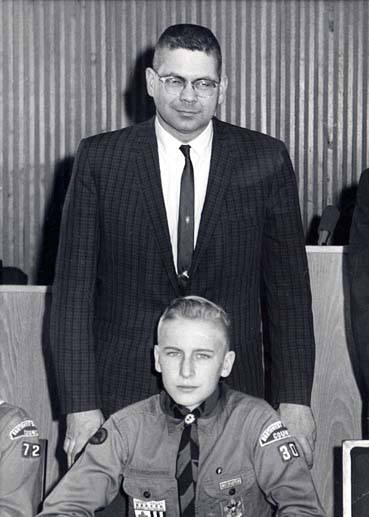 Bernard “Ben” Marsh, Village Manager (1959-66) and reformer, posing here with an unidentified boy scout, vitalized Skokie’s village-manager form of government during his tenure.
Bernard “Ben” Marsh, Village Manager (1959-66) and reformer, posing here with an unidentified boy scout, vitalized Skokie’s village-manager form of government during his tenure.
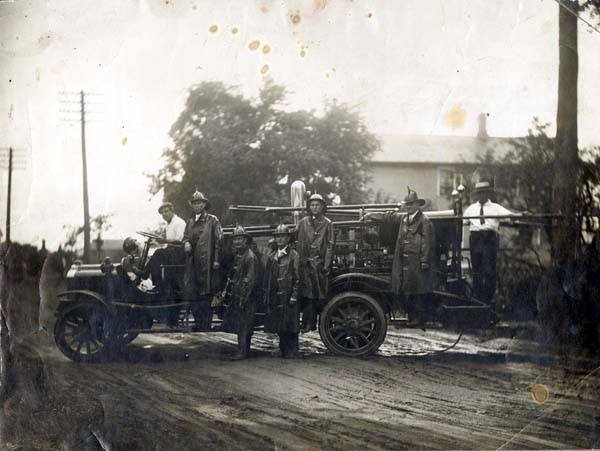 The old Skokie Fire Department
The old Skokie Fire Department
 A modern ladder truck
A modern ladder truck
Village Government
Skokie’s village government is just one of several autonomous public agencies that serve area residents. In addition to electing Skokie government officials, villagers also select separate boards to oversee the library, the park district, the school districts, and they participate in Niles Township, Cook County, Metropolitan Sanitary District, and State of Illinois elections and referenda as well.
As in all formal communities in Illinois, Skokie government derives its authority from Article VII, the Local Government Article, of the 1970 Illinois State Constitution and from various statutes of the state legislature.
In Illinois, all municipalities with populations of more than 25,000 operate as home rule communities, meaning that they may legislate in all areas except those specifically pre-empted by federal or state laws and constitutions. The village, therefore, has broad powers to legislate and enforce procedures to protect the public health, safety, morals, and welfare; to collect taxes and incur debt; and to regulate commerce. Copies of Skokie’s Code of Ordinances* can be viewed at the Village Clerk’s office in Village Hall or at the Skokie Public Library.
*Editor’s note: The Code of Ordinances is now available online via the Village of Skokie website.
The Mayor
The primary functions of the Mayor are to preside over meetings of the Board of Trustees and to appoint, with the approval of the Board, the Village Manager, the Corporation Counsel - and staff, and various boards and commissions, which in 1987 numbered 16.
The mayor can vote on all matters before the Board, and must vote in order to break a tie. The Mayor can also veto ordinances, resolutions, or motions passed by the trustees, in which case a two- thirds majority vote by all the Board members is required to override it.
With the approval of the Board, the Mayor appoints members to the 16 different boards, councils, and commissions, which are made up of Skokie citizens. Although these organizations do not perform legislative functions, they do provide significant advisory, legal, and regulatory services. By 1987, the following councils and commissions were in existence (the number of authorized members appears in parentheses after each):
- Advisory Council on Disabilities (12-15)
- Advisory Council on Human Services (18-24)
- Appearance Code Commission (5)
- Beautification Commission (20)
- Blood Donor Commission (20)
- Board of Health (20)
- Board of Local Improvements (5)
- Cable TV Advisory Board (7)
- Consumer Affairs Commission (13)
- Fine Arts Commission (20)
- Fire and Police Commission (5)
- Flood and Water Pollution Abatement Commission (15)
- Human Relations Commission (21)
- Plan Commission (9)
- Traffic Safety Commission (25)
- Zoning Board of Appeals (7)
The Mayors of Skokie
| Adam Harrer | 1888-1890 |
| John W. Brown | 1890-1895 |
| Peter Blaumeuser III | 1895-1897 |
| Dr. George Sintzel | 1897-1910 |
| George H. Klehm | 1910-1923 |
| John E. Brown | 1923-1933 |
| George Blaumeuser | 1933-1945 |
| John W. Wuerth | 1945-1947 |
| Arthur Simmons | 1947-1949 |
| George Wilson | 1949-1957 |
| Allan Weissburg | 1957 |
| Ambrose Reiter | 1957-1961 |
| Myron Greisdorf | 1961-1965 |
| Albert J. Smith | 1965-1988 |
| Jacqueline Gorell | 1988-1999 |
By Illinois state law, the Mayor also serves as the village liquor commissioner, licensing and regulating all retail establishments selling alcoholic beverages. As the legal head of the village, the Mayor acts as a legislative liaison between Skokie and the state and federal governments, and represents the village in a variety of civic functions.
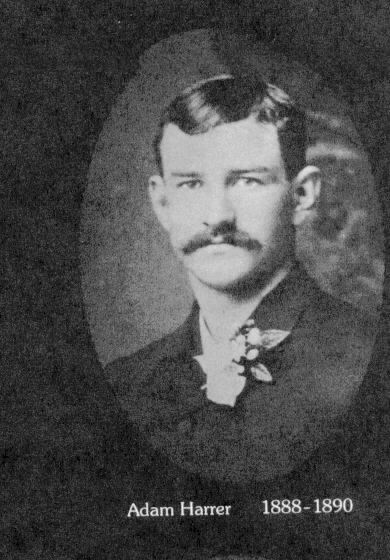 Adam Harrer (1888-1890)
Adam Harrer (1888-1890)
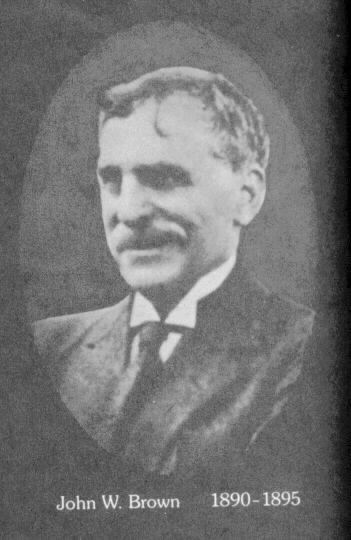 John W. Brown 1890-1895
John W. Brown 1890-1895
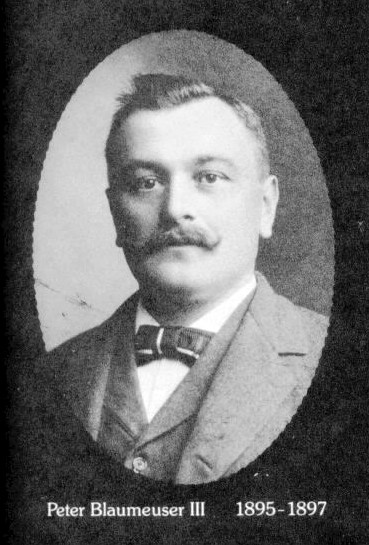 Peter Blaumeuser III 1895-1897
Peter Blaumeuser III 1895-1897
 Dr. George Sintzel 1897-1910
Dr. George Sintzel 1897-1910
 George H. Klehm 1910-1923
George H. Klehm 1910-1923
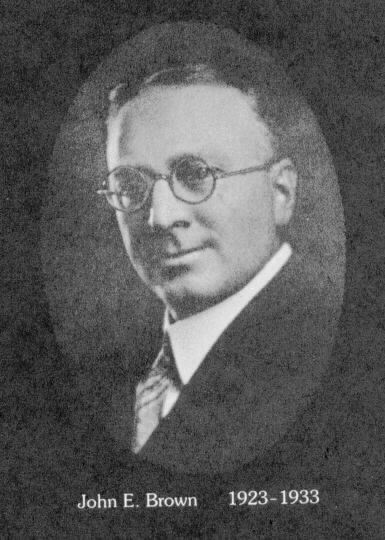 John E. Brown 1923-1933
John E. Brown 1923-1933
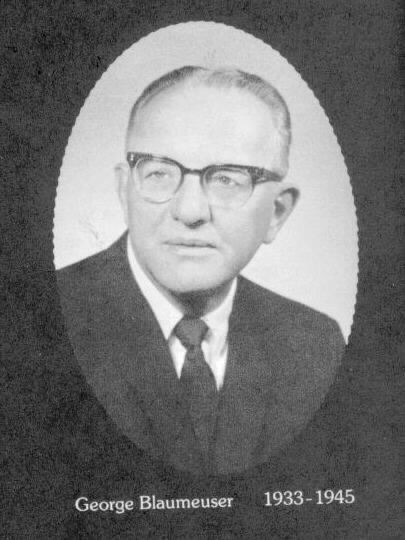 George Blaumeuser 1933-1945
George Blaumeuser 1933-1945
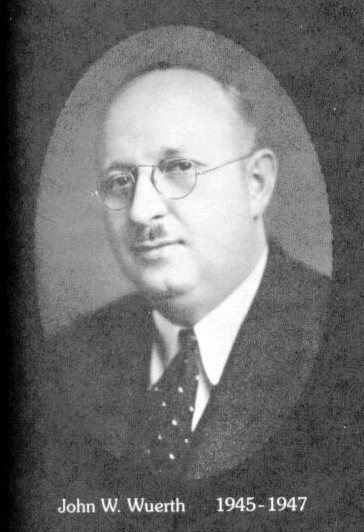 John W. Wuerth 1945-1947
John W. Wuerth 1945-1947
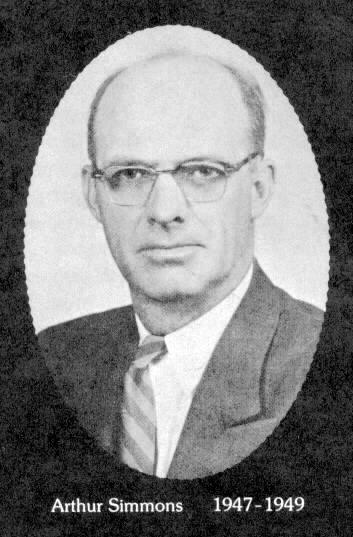 Arthur Simmons 1947-1949
Arthur Simmons 1947-1949
 George Wilson 1949-1957
George Wilson 1949-1957
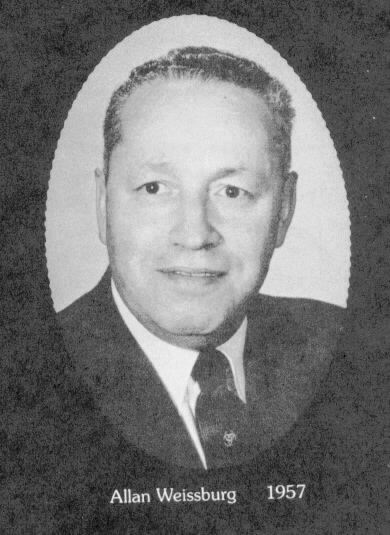 Allan Weissburg 1957
Allan Weissburg 1957
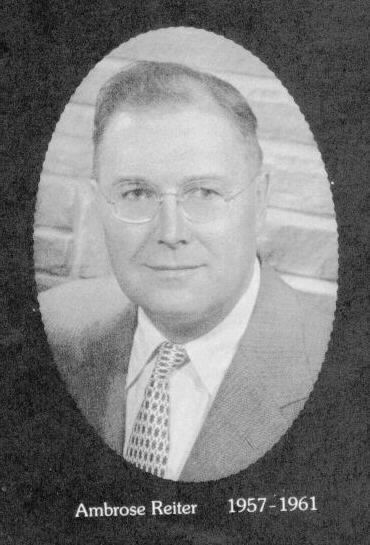 Ambrose Reiter 1957-1961
Ambrose Reiter 1957-1961
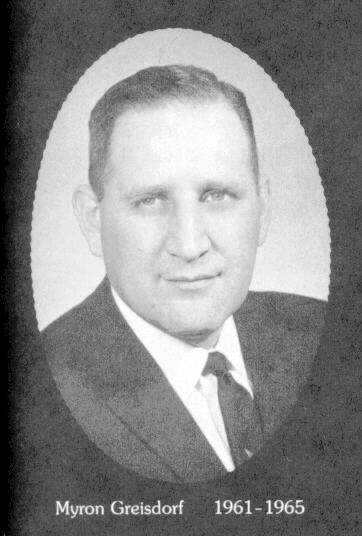 Myron Greisdorf 1961-1965
Myron Greisdorf 1961-1965
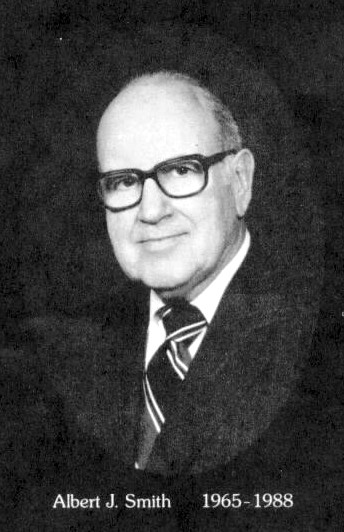 Albert J. Smith 1965-1988
Albert J. Smith 1965-1988
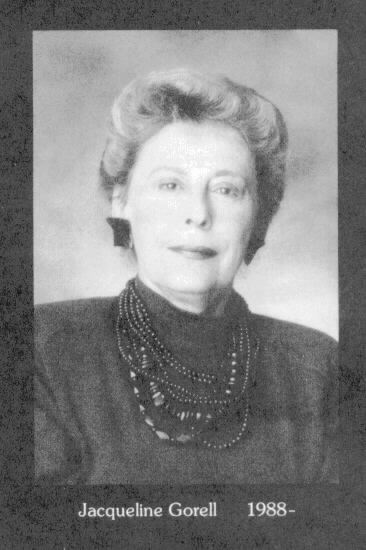 Jacqueline Gorell 1988-1999
Jacqueline Gorell 1988-1999
The Board of Trustees
The six trustees, working with the Mayor, serve as the legislative and policy-making body of the village. All ordinances must be passed by majority vote of the Board. The Board is also responsible for adopting a village budget and undertaking an annual audit, confirming all appointments made by the Mayor, and approving all legal contracts to which the village of Skokie is a party, as well as the payments which may result from them. Although the powers of the Board of Trustees as a whole are broad, individual trustees enjoy no more power or prerogatives than any other citizen of the village.
Meetings of the Board of Trustees are open to the public and are held regularly in the council chambers of the Village Hall twice a month on Monday nights. Time is allotted at the end of each board meeting for the offering of comments by area citizens, but the Mayor may also recognize a speaker who wishes to comment on a matter before the Board while a meeting is in progress.
100 Years of Trustees
Since Skokie was incorporated back in 1888, the following citizens have served the village as members of the Board of Trustees.
| Christian Baumann | 1888, 1893-1894 |
| Michael Harrer, Sr. | 1888-1889 |
| Peter Blaumeuser, Jr. | 1888-1889 |
| Ivan Paroubek | 1888-1889 |
| Fritz Rose | 1888-1890 |
| Fred Stielow | 1888-1892 |
| Ernst Galitz | 1890-1893 |
| Fred Scheuber | 1890-1891 |
| Edward Blaumeuser | 1890-1891 |
| Dr. George Sintzel | 1891-1894 |
| M.M. Gabel | 1892-1893 |
| Adam Harrer | 1893-1894, 1898-1899 |
| Samuel Meyer | 1894-1897 |
| George H. Klehm | 1894-1897 |
| Herman Wendt | 1894-1895 |
| Louis C. Hasse | 1895-1896 |
| John W. Brown | 1895-1899 |
| Henry Heinz | 1896-1897 |
| Edward Blaumeuser | 1897-1898 |
| Peter Baumhardt | 1897-1903 |
| John Blaumeuser | 1898-1899 |
| Adam Barg | 1898-1899 |
| Henry Loutsch | 1899-1901 |
| Chris Hachmeister | 1900 |
| Eberhardt Blaumeuser | 1900-1907 |
| Ivan Paroubek | 1900-1901 |
| George Lohrmann | 1900-1901 |
| George Landeck | 1901-1906 |
| Jacob Meyer | 1902-1903 |
| George Wolf | 1902-1906 |
| William Galitz | 1902-1905, 1910-1914 |
| Michael Baumann | 1903-1905 |
| Peter Heinz | 1906-1909 |
| Samuel Meyer | 1906-1908, 1914-1925 |
| Andrew Schmitz | 1906-1909 |
| Fritz Rose | 1907-1908 |
| Jacob Baumhardt | 1907-1908 |
| M.S. Wagner | 1908-1913 |
| John W. Brown | 1909-1920 |
| Richard Kruse | 1909-1920 |
| Edward Trausch | 1909 |
| Albert Lies | 1910-1913 |
| Robert Hoffman | 1910-1929 |
| Christian Blaumeuser | 1914-1921 |
| John P. Even | 1921-1922 |
| Henry Heinz | 1921-1922 |
| William Schnur | 1922-1925 |
| William Teufert | 1923 |
| Henry Vogt | 1923-1932 |
| Peter Conrad | 1924-1932 |
| William Stielow | 1926-1931 |
| Edward Harms | 1926-1932 |
| Louis Faber | 1930-1931 |
| Louis Falzer | 1930-1931 |
| Robert Pollock | 1931-1932 |
| Ambrose Brod | 1932-1944 |
| Ernst Burkitt | 1933-1938 |
| John Desmond | 1932-1934 |
| Ted J. Heinz | 1933 |
| Thomas S. Rae | 1933-1944 |
| Willard C. Galitz | 1933-1942 |
| Russell Tucker | 1934-1944 |
| John W. Wuerth | 1935-1944 |
| Peter Conrad | 1939-1946 |
| William Permer | 1943-1946 |
| Henry Hoffman | 1945-1946 |
| Carl Bennett | 1945-1948 |
| Jeffrey Waters | 1945-1947, 1949-1950 |
| Fred Kloman | 1945-1946 |
| Arthur Simmons | 1947 |
| Alan Truesdell | 1947-1950 |
| John Flynn | 1947-1948 |
| Robert S. Throop | 1947-1948 |
| Armin Mayer | 1947-1948 |
| John O’Shaughnessy | 1948 |
| Robert E. Graf | 1949-1952 |
| Ambrose Reiter | 1949-1957 |
| William A. Krewer | 1949-1960 |
| Miles T. Babb | 1949-1960 |
| Fred W. Wakefield | 1951-1958 |
| Sylvester J. Reese | 1951-1958 |
| Francis P. Seul | 1953-1955 |
| Raymond V. Krier | 1956-1960 |
| Jum W. Smith | 1957-1958 |
| Albert J. Smith | 1959-1960 |
| G. Ray Jackson | 1959-1960 |
| William Siegel | 1959-1960 |
| Samuel S. Berger | 1961-1964 |
| Anthony P. Czarnecki, Jr. | 1961-1964 |
| Richard C. Lindberg | 1961-1964 |
| John W. Mock | 1961-1964 |
| Francis O. Mudd | 1961-1964 |
| John W. Wozniak | 1961-1964 |
| John T. Banghart | 1965-1968 |
| Calvin R. Sutker | 1965-1969 |
| Herman Schmidt | 1965-1969 |
| Bernard M. Kaplan | 1965-1969 |
| Walter B. Flintrup | 1965-1973 |
| Robert J. Morris | 1965-1977 |
| Thomas J. McElligott | 1965-1977 |
| John Pinkerman | 1968-1969 |
| Edward Fleischman | 1969-1977 |
| Bernard Harrison | 1969-1973 |
| Morris Topol | 1969-1981 |
| Don R. Copeland | 1973-1977 |
| Frank G. McCabe | 1973- |
| Charles J. Conrad | 1977-1984 |
| Jacqueline Gorell | 1977-1988 |
| Manly R. Croft | 1977- |
| William J. Elliott | 1977- |
| Robert S. Fritzshall | 1981- |
| George Van Dusen | 1984- |
| Betty A Petroski | 1988- |
The Village Clerk
Maintaining legal records of the village and overseeing the conduct of village elections and referenda are the two major functions of the Village Clerk. The Clerk attends all meetings of the Board of Trustees and is responsible for keeping a full record of the proceedings. In addition, the Village Clerk makes arrangements for the safekeeping of legal documents, such as signed ordinances, resolutions, agreements, and contracts, to which the village of Skokie is a party.
The Village Clerk also serves as a deputy registrar for the Clerk of Cook County. Citizens who are residents of Skokie can register to vote in all federal, state, county, and local elections by visiting the clerk’s office in Village Hall at least 30 days prior to an election.
Village Clerks
| Frank Wagner | 1888-1890 |
| Peter Blaumeuser III | 1890-1895 |
| John Paroubek | 1895-1898 |
| Henry Heinz | 1898-1904 |
| George Busscher, Jr. | 1904-1910 |
| Anthony Paroubek | 1910-1914 |
| Charles F. Langfeld | 1914-1932 |
| John Bresmann | 1932-1937 |
| Harold W. Klehm | 1937-1946 |
| Arthur Thompson | 1946-1949 |
| Peter Struck | 1949-1953 |
| John E. Seeley | 1953-1961 |
| William Siegel | 1961-1982 |
| Marlene Williams | 1982- |
The Village Manager
In the three decades since the position of Skokie Village Manager was created by referendum amid a storm of political in-fighting, the office has become one of the most valuable assets of the village government. The chief administrative officer of the village, the manager is employed by the Mayor and the Board of Trustees and serves on a full-time basis at their discretion. It is the manager’s responsibility to enforce all village ordinances, recommend policy alternatives to the Board, and prepare an annual budget for the Board’s approval.
Because the Village Manager is an appointed position, the emphasis in the selection process is on professional training and experience, rather than appeal to the voting population. The manager is specifically prepared to evaluate effective methods for carrying out the policies of the Mayor and the Board of Trustees, for evaluating the progress of village programs, for providing a public information service, and for compiling the village budget and presenting it to the Mayor and the Board of Trustees for approval. The manager’s office is also responsible for the administration of federal and state grants.
The Village manager directs and coordinates the activities of all village departments except the Corporation Counsel and staff (the Legal Department), which, like the advisory commissions, reports directly to the Mayor and the Board of Trustees.
The Village Manager also has responsibility for employing and dismissing the directors of village governmental departments and most other village employees. Members of the police and fire departments below the rank of chief are appointed by the Fire and Police Commission, as provided by state law. By custom, the Village Manager delegates the hiring of other village employees to the Personnel Division, itself a part of the Village Manager’s office. An Assistant Village Manager, who works with the manager and assumes the manager’s position during his or her absence, is also a part of the office.
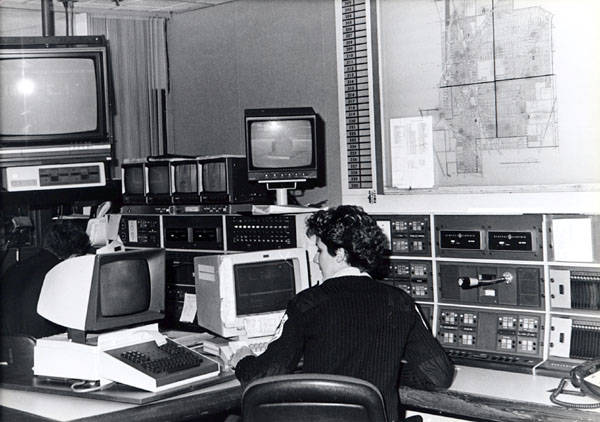 The modern Skokie Central Dispatch in action. A telecommunicator attends to the elaborately modern communications set-up which serves the police and fire departments.
The modern Skokie Central Dispatch in action. A telecommunicator attends to the elaborately modern communications set-up which serves the police and fire departments.
Skokie’s Village Managers
| Arthur Lowther | 1958 |
| Henry Weber (acting) | 1958-1959 |
| Bernard J. Marsh | 1959-1966 |
| Gordon E. Thorn | 1966-1969 |
| William N. Brady (acting) | 1969-1970 |
| John M. Matzer, Jr. | 1970-1978 |
| Bernard J. Hohs (acting) | 1978-1979 |
| Robert J. Eppley | 1979-1987 |
| Albert J. Rigoni | 1987- |
The Legal Department
The staff attorneys of the Legal Department are appointed by and are responsible to the Mayor and the Board of Trustees. The department is composed of a Corporation Counsel, and the village prosecutors. The department acts as a legal advisor to the Mayor, the Board of Trustees, the Village Manager, and all village departments, boards, and commissions.
The lawyers in the Legal Department represent the village in litigation by or against the village. They also serve as prosecutors for violations of village laws.
The department works closely with the Board of Trustees drafting ordinances and resolutions and preparing and reviewing legal contracts involving the village.
The Legal Department
| Bernard Harrison | 1959-1961 |
| Marvin Glink | 1961-1965 |
| Harvey Schwartz | 1966-1987 |
| Barbara M Meyer | 1988- |
The Police Department
When Niles Centre was incorporated in 1888, its law enforcement agency consisted of a single police magistrate. By the mid-1980s, the force had grown right along with the community, employing now more than 100 officers and approximately 30 civilian employees.
All new officers of the Skokie Police force are required to pass the extensive Basic Law Enforcement Officers Training Course approved by the Illinois Local Government Law Enforcement Officers Training Board. Additional training for new recruits is provided by the Skokie Police Department, as well as ongoing training programs in all areas of law enforcement for veteran officers.
The Skokie Police Department offers a variety of community safety programs. In 1987, the department maintained 17 different programs, targeted for senior citizens, youths, business and industry, as well as the general population. A few of these programs include assistance in installing burglary alarms and surveying home security, regular patrol-car checks of homes whose owners are away, personal safety programs for women and senior citizens, and various youth counseling services. There is also a variety of business oriented programs on topics as diverse as bad checks, bomb threats, retail theft prevention, and even a ride along program in which citizens over the age of 12 can ride in squad cars with uniformed officers on patrol.
 Skokie’s finest from an earlier generation. The five notables standing in front of one of Skokie’s squad cars of the era are, left to right: Chief Griffin, Captain Stolberg, Judge Ralph Jellman, George Blameuser, and Ambrose Brod.
Skokie’s finest from an earlier generation. The five notables standing in front of one of Skokie’s squad cars of the era are, left to right: Chief Griffin, Captain Stolberg, Judge Ralph Jellman, George Blameuser, and Ambrose Brod.
The Fire Department
One of the oldest surviving institutions in the village, the Skokie Fire Department dates all the way back to May 6, 1881, when nearly all the adult males in the vicinity banded together to form the Niles Centre Volunteer Fire Department. The department has come a long way since the first bucket brigade was formed more than a century ago. Today three modern fire stations are manned around the clock by firefighters trained in the latest techniques of fire prevention and control, paramedicine, and rescue service.
The department’s headquarters (Station #1) is located in a building constructed in 1969 at 7424 Niles Center Road. Station #2, built in 1940, is at 8340 Hamlin Avenue, and Station #3, 9024 Gross Point Road, was built in 1960. Approximately 120 people are employed in various capacities by the department.
New fire fighters must pass an extensive course conducted by certified instructors in the Skokie Fire Department. Even after passing the course, a significant portion of each duty shift for fire fighters involves drills and training. A drill tower and classroom are located at Station #3.
The department maintains four engine companies (three regular and one reserve), three ladder companies (two regular and one reserve), a number of regular and mobile intensive care units, and a variety of other support vehicles.
A 1977 village publication offered this description of a typical fire alarm. “When an alarm comes in which indicates a structural fire, the standard response is to send two engines, one truck, a squad pumper, and a deputy chief. An engine is a pumping unit which carries hose and has the capacity to connect to a hydrant and increase the pressure of the water in the hose. The truck carries ladders and forcible entry tools and equipment to assist the engine company. A squad pumper is a multi-purpose unit used in structural fire situations. The squad pumper is also equipped with tools and rescue equipment for vehicle accidents.”
Like the Police Department, the Skokie Fire Department offers a number of community safety programs. Included are inspection services, fire safety programs, paramedic packs to alert health emergency professionals treating persons with specific medical conditions, and stickers to identify areas housing invalids who would need assistance during an emergency requiring evacuation.
The Planning Department
The Planning Department provides the Mayor, the Board of Trustees, the Village Manager, and the Plan and Appearance Code commissions with a variety of reports, documents and exhibits prepared to provide expert assistance in helping the village retain the character of Skokie for its residents. The department plays an important role developing a comprehensive plan for the community as well as specific zoning ordinances. It also provides villagers with information about the zoning of private property, petitions to amend code requirements, and help with various legal documents related to real estate ownership and usage.
The department has significant involvement in the village’s economic development as well, ensuring that the community maintains its tax base through redevelopment. This is especially important in light of the fact that Skokie has virtually no real vacant property for new development.
Building and Zoning Department
The primary function of the Building and Zoning Department is to help residents, builders, and architects construct buildings and improvements in compliance with village building codes. All new construction requires a permit from the department, and there are several inspections while construction is in progress. The foundation of a building is inspected before concrete is poured. When plumbing, electrical, and heating systems are installed, but before wall coverings are applied, a second inspection is made. A final inspection is required before a Certificate of Occupancy is awarded. The departments employ various inspectors skilled in different areas of construction, such as building mechanics, electrical systems, and plumbing.
East Dempster Redevelopment
By the early 1980s, there was growing concern in the village about the deterioration of the commercial area on Dempster Street between McCormick Boulevard on the east and Kildare Avenue to the west.
The structures along that stretch of road had aged, many showing signs of definite need for renovation. To remedy the situation, a task force was appointed by Village Manager Robert J. Eppley to study the situation and come up with a program to rehabilitate the area.
The result was the East Dempster Redevelopment Program, a comprehensive plan for the physical and economic rejuvenation of the area, approved in December 1984. More than $7.8 million for public improvements and for financial inducements for private redevelopment of properties was allocated.
The carefully planned program called for improvements in four basic areas: the roadway itself, off-street parking, public works, and general beautification.
Roadway improvements included the widening of a portion of Dempster Street and the banning of on- street parking to assure a more efficient flow of traffic. Additional off-street public parking lots were constructed. In the area of public works, outdated structures were acquired and demolished, paving the way for private redevelopment, and where needed, new curbs and sidewalks were added. A new street lighting system was installed, replacing outdated light fixtures with fewer, though more effective lights.
To improve the looks of the area, there was new landscaping and the adoption of a Village Sign Ordinance. A Facade Improvement Program was also established, offering financial assistance in the form of rebates to private owners and developers for renovating and upgrading commercial properties on east Dempster Street.
All improvement work for the East Dempster Street Program was completed by May 1988.
Public Works Department
The largest and most diverse of all the village departments is the Public Works Department, whose activities range from garbage collection to tree trimming to street, water main, and sewer maintenance. The Municipal Engineer heads the Civil Engineering Division, which designs and supervises the construction of public facilities such as streets, water mains, sewers, sidewalks, parking lots, and alleys. The division is also responsible for inspecting plans for commercial buildings.
The Traffic Engineering Division conducts ongoing studies to increase traffic flow on main arterial roads and diminish it along residential streets.
The Water and Sewer Division, among other duties, maintains and repairs all storm water and sewage basins, reads and maintains village water meters, and checks fire hydrants and valves after every use.
The Refuse Collection Division is responsible for picking up residential garbage twice a week, and is one of the few agencies in Chicago’s suburbs providing twice-a-week garbage collection.
The Building Division maintains and repairs all structures owned or rented by the village.
The Automotive Division maintains and repairs all village vehicles.
The maintenance repair of all village streets, alleys, sidewalks, and parking lots is the responsibility of the Street and Alley Division, which also has the chilly task of clearing streets and sidewalks of ice and snow.
Human Services Division
The Human Services Division of Skokie is a very important part of Village government, particularly because its entire reason for being is to promote and aid the health and welfare of Skokie residents.
Under the jurisdiction of the Village Manager’s office, the Human Services director is responsible for all planning and direction of the division, whose purpose is to provide counseling, transportation, and meals for handicapped persons.
The division’s efforts extend beyond those essential services, specifically to coordinate cooperation between local public, private, and volunteer organizations to achieve its goals. And, on a more personal level, Human Services makes special efforts to establish and maintain contact with homebound residents through the work of volunteers.
It is by no means a small operation. In fiscal year 1988, it is estimated that the Human Services Division will respond to approximately 41,800 requests for services, spend 6,000 volunteer hours carrying out the division’s programs, and deliver about 6,760 meals, among various other things.
The village has defined the objectives of the Human Services Division, and it is a fine example of the growth of Skokie and the spirit that is so closely associated with it. Information about these services is readily available at Village Hall.
Health Department
Although the village maintained a part-time health office since the 1930s, a formal Health Department was not established until nearly three decades later, when early Village Manager Ben Marsh started one. Today the Health Department operates a variety of programs in the areas of personal health, animal control, and environmental protection. The personal health services offered by 1987 included the following:
- Adult Hearing Screening
- Blood Pressure Clinic
- Blood Replacement Program
- Children’s Immunization Clinic
- Diabetes Screening
- Flu Shots for Older Residents
- Foreign Travel Immunization Requirements
- Health Education Literature and Programs
- Home Visits from Public Health Nurses
- Information and Referral
- Preschool Vision and Hearing Screening
- Referral to VD Clinics
- Skokie Birth and Death Certificates
- Well Child Clinic
The department’s Environmental Health Division employs registered sanitarians who make regular inspections of restaurants, food stores, food delivery vehicles, taverns, and a variety of other establishments including barber shops, laundromats, and dry cleaners.
 The Skokie Health Department in action, in this instance, a cholesterol screening
The Skokie Health Department in action, in this instance, a cholesterol screening
Finance Department
The agency with the difficult task of overseeing the financial operation of all the previously mentioned government departments, commissions, and employees is the Finance Department. It is directly responsible for processing the payroll and the investment of village funds. The department director supervises the accounting, collecting, data processing, licensing, parking fine and enforcement, and weights and measure control functions of the village. The director also serves as chairman of the Insurance Committee and acts as treasurer for the Fire and Police Pension boards.
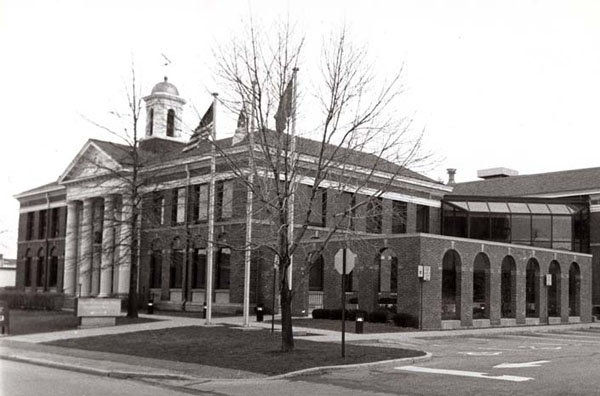 Skokie Village Hall at 5127 Oakton Street
Skokie Village Hall at 5127 Oakton Street
The Honorable Albert J Smith
On November 19, 1987, more than 1,000 people whose hues had been touched by the man who served as Skokie’s mayor for 22 years gathered at Chicago’s Navy Pier to pay him homage. A few months earlier, on September 14, Mayor Smith had publicly announced that he would retire from office at the end of December, having served by far the longest mayoral tenure in village history.
Among the many telegrams and good-luck messages sent to the mayor at the Navy Pier toast were those from President Ronald Reagan, Illinois Governor James Thompson, Illinois Attorney General Neil Hartigan, the Chicago City Council, Joseph Cardinal Bernardin, and the late Chicago Mayor Harold Washington.
“Albert J. Smith is part of Skokie, and Skokie is part of him,” said State Representative Calvin Sutker, a former village trustee of Skokie. “They are one and inseparable, and each is better because of the other.”
With characteristic humor and humility, Mayor Smith talked briefly about the decision he and his wife Angie made to leave office. “It is much nicer to walk away,” he told the crowd of well-wishers, “because we can hear all the wonderful things people are saying about us. If I had been carried away, they would have said the same things, but I wouldn’t have heard them. Now I can walk away with a song in my heart.”
As a young man, Albert Smith attended the University of Notre Dame. Following graduation, he worked for 42 years on the floor of the Chicago Board of Trade. He was working in that capacity when he first came to local political prominence in the late 1950s. At that time, he helped to organize the reform-minded Skokie Caucus Party. On the Caucus slate in 1959, Smith was elected a village trustee, but lost his bid for re-election when the Caucus Party faltered a few years later.
In 1965, Smith won the election for Mayor on the Caucus ticket, and remained in that office for more than two decades.
Those who have worked with the Mayor and benefited from his leadership remember that attention to detail was one of his most important characteristics. “I think of all the times the Mayor has come to my office and said, ‘Come on, we have to make a house call,” Village Clerk Marlene Williams was quoted in the Skokie Review newspaper. “And so we would go to check out a pothole in an alley, or a car parked in a no-parking zone.” Although other village professionals were routinely assigned to such matters, Mayor Smith often made quick investigations of his own when prompted by a resident.
Of course, not all his duties were so mundane. In 1977 and 1978, Mayor Smith led the fight to prohibit American Nazis, led by Frank Collin, from marching on Skokie’s streets, thereby creating national and even international news. And, as always, his wife Angie was right there with him, giving him strength and loyalty.
He was later invited by the government of Israel to tour the country and meet with high-ranking officials. As a token of their high esteem, 44 friends joined Angie and Al on that historic tour. Recently, he signed into law the toughest public smoking-control statute in Illinois.
These well-publicized events were exceptions in his long mayoral career. Most of the hours in the 22 years of public service he devoted to the village as Mayor were spent on the many and varied responsibilities that are necessary to achieve efficient and scandal-free government.
Over the years, Mayor Smith has been the recipient of a wide variety of awards: Man of the Year, Citizen of the Year, among many others. Perhaps one of the most meaningful accolades was proffered by his secretary, Bea Schatz, when she described him simply as, “one of the most caring people I have ever known.”
Albert J. and Angie Smith
The Skokie Park District
Over the past six decades, Skokie has developed one of the finest systems of parks of any community its size in America. As a result, the U.S. Department of interior has formally recognized the district as a model park district.
The wide array of first-rate facilities and services offered by the Skokie Park District did not develop overnight, however. The birth of the village’s public park system did not, in fact, occur until February 3, 1928, when a referendum was passed to create the Niles Center Park District. The first five elected commissioners were: Emil Blameuser, John Kalmes, Leo Heinz, A.C. Galitz, and W.R. Nelson.
The following year the commissioners purchased 62 acres of land from the Cook County Forest Preserve, paying $1,000 per acre. The land was divided by the right-of-way for the future North Shore Railroad (now the Skokie Swift), and prompted the creation of two separate parks, Oakton and Emily on either side. The original purchase also included the land which is now Niles Township High School East (now closed).
From 1929 to 1940, the Park District Board acquired an additional 50 acres of parkland.
By the early 1950s, Skokie was in the first stage of a major population boom, creating an evident need for new parklands. From 1949 to 1954, the village population had grown from 14,000 to 23,000.
In 1954, Robert Ruhe became the first professional Superintendent of Parks and Recreation, thus inaugurating an era of public responsibility and action that continues today. A $1,755,000 bond issue, resulting in the creation of 16 new parks and other improvements, was passed by a 2-1 margin in 1955.
By 1960, the population of Skokie was approaching 60,000, necessitating further expansion. The most recent large-scale additions to park property land resulted from a $2 million bond issue passed in 1964. A $600,000 U.S. Department of Housing and Urban Development grant assisted in developing 10 new parks and a number of recreational programs. Since that time, the major emphasis of the Skokie Park District has been on improving and remodeling existing facilities and properties, which currently include over 180 acres of parkland.
Interest in indoor ice skating along with the sale of $1,060,000 in revenue bonds brought about the Skatium Indoor Ice Skating Rink in the early 1970s. Following was the construction of a 9-hole, par-3 golf course.
In 1972, the Park District joined with six other Park District agencies in two townships to provide special programs on a year-round basis for handicapped individuals. Known as the Maine-Niles Association of Special Recreation, its first home office was at the Skokie Park District.
Some of the largest and most popular of the community parks include Central, Devonshire, Laramie, Oakton, and Weber Park, which includes an indoor ice rink and a public 9-hole golf course. Each of these recreational areas is at least 10 acres in size, many offering tennis courts, picnic areas, playgrounds, baseball diamonds, and basketball courts. Other major facilities include a full-time day care center.
For many years, Skokie residents have enjoyed the public swimming pool located in Oakton Park. In the summer of 1988, an enlarged water theme park is scheduled to open, featuring a 14,000 square-foot pool, a 160-foot water slide, and two water playgrounds for children.
Another facility scheduled to open in 1988 is the Emily Oaks Nature Center at 4750 Brummel. Its purpose is to preserve the unique natural habitat of Skokie Valley, and will include a lagoon, natural grasslands, wooded areas, and an interpretive center that will house a number of exhibits.
Over the years the Skokie Park District has offered quality recreational programs to all age groups. In the future, the aim of the Park District is to continue to meet the needs and desires of Skokie residents.
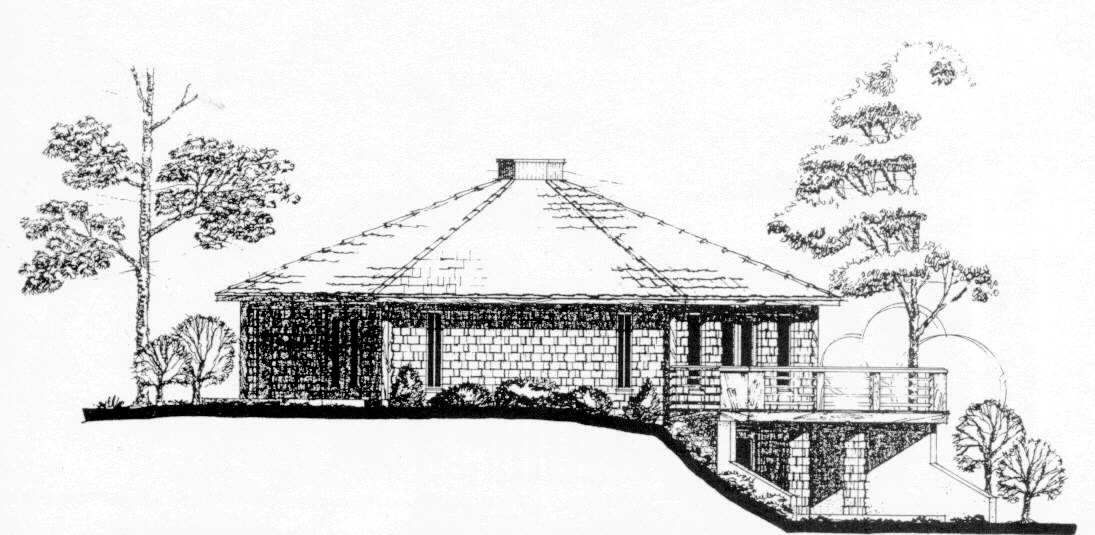 Emily Oaks Nature Center, dedicated in 1988
Emily Oaks Nature Center, dedicated in 1988
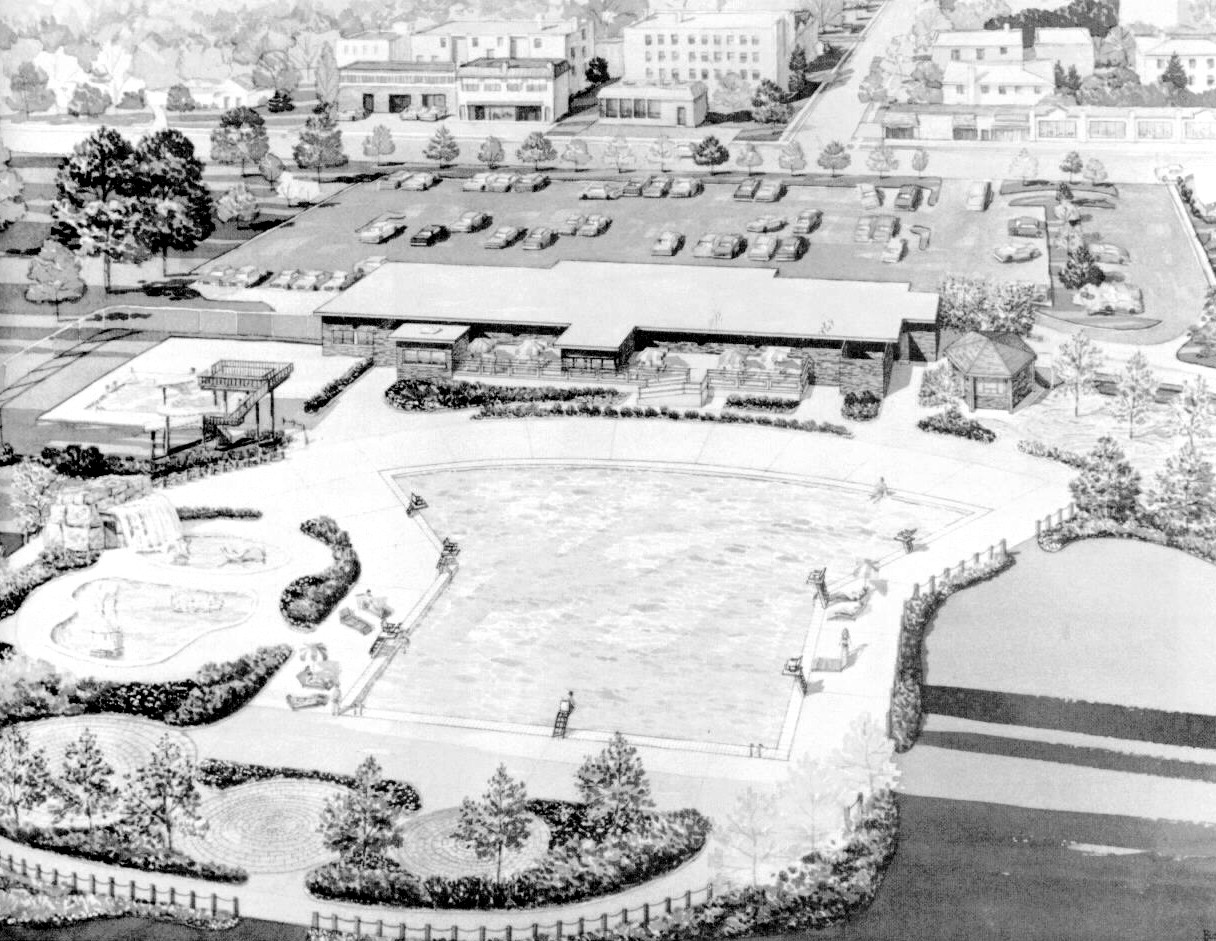 Skokie Water Playground at Oakton Part, also dedicated in 1988
Skokie Water Playground at Oakton Part, also dedicated in 1988
The Skokie Public Library
In 1929, a group of women banded together to form the Cosmos Club in Niles Center, an organization whose purpose was to launch and carry out projects that would aid the community. One of their first efforts was to develop a public library, something the village had never had.
A committee of Cosmos Club women was organized under the direction of Mrs. Alan R. Wile, and the quest for a community library was off and running. Space was obtained in the Blaumeuser Building at Lincoln and Oakton. To furnish it, the club had to rely on donations of such things as desks, chairs, a reading table, a clock, and curtains.
Funds were raised through card parties and bake sales as well as through gifts from civic organizations and residents. And, according to an early history of the library, the fund “swelled to $650.”
The new library for Niles Center was formally opened February 7, 1930. At the time of that ceremony, the library could boast about 1,000 volumes, most of the books donated by residents of the village. Its doors were open to the public for 10 hours each week.
The Cosmos Club was forced to close the library in October 1932 because its space in the Blaumeuser Building was rented for other purposes, and the club could not afford to rent elsewhere.
The village came to the club’s rescue, however, and made space available in Village Hall, where the library was reopened in April 1933.
In 1941, the Cosmos Club offered the library to the village of Skokie, which accepted and then transformed it into a tax-supported institution. The library was then moved to a building at 4913 Oakton, where it shared space with the Skokie Post Office until it took over the entire building in 1952.
Mrs. Bertha Rosche became the head librarian of the official Skokie Public Library in 1941 and remained in that capacity until 1956. Upon her retirement, Mrs. Rosche was succeeded by Mary Radmacher, an innovative and far-sighted librarian, who over almost three decades of service turned a small suburban library into a nationally honored institution.
The most vital step in that direction came about in 1958. With the library’s lease about to expire, the library board held a referendum on February 11 and an $850,000 bond issue was passed to provide funds for the construction of a new library building. The location was to be on land (purchased earlier by the library) on Oakton Street just west of Village Hall.
On February 1, 1960, the new Skokie Public Library was opened at 5215 Oakton. And from the start it was a showplace. Designed by the eminent Chicago architectural firm Skidmore, Owings and Merrill (architects of the University of Illinois Chicago Circle Campus), the building quickly earned awards from the Chicago Municipal Art League, the American Institute of Architects, and the American Library Association.
At its opening, the new library contained approximately 50,000 books, but had a capacity of housing 150,000, and it employed 25 people. Under the guidance of Mary Radmacher, the library has grown considerably since then, with a major addition in 1972 tripling its floor space.
In a statistical summary for fiscal year 1987, Library Director Carolyn Anthony reported that the library contained 355,924 books in its collection, as well as thousands of other types of educational materials, including record albums, cassette tapes, and various other audio and visual materials. Total circulation for 1987 was 671,494, an average of about 11 circulations for each resident of the village.
Although it maintains many volumes in virtually all subject areas, the library is particularly noted for its collections of British and American literature, and for its reference department. As part of its 1986 awards, North Shore magazine cited the Skokie Public Library as the “best reference library on the North Shore.”
As a member of the North Suburban Library System, an organization of 44 area libraries, the Skokie Public Library is home to the System Reference Service, which answers requests forwarded from other libraries. In 1986, staff librarians answered about 150,000 requests for information.
The process of finding just the right book from the hundreds of thousands in the Skokie collection has been greatly accelerated since the library installed easy-to-use computer catalog terminals at strategic locations throughout the building. No previous computer experience is needed to operate the terminals.
There are many special programs and events offered by the Skokie Public Library. An extensive calendar of upcoming events is published three times a year by the library and sent to approximately 26,000 households in the village. Among the highlights are recitals by talented young musicians in the Young Steinway Concert Series, held on Sunday afternoons in Petty Auditorium.
Groups that have made special performances in the auditorium in 1986 and 1987 include the Old Towne Renaissance Consort, the Upstage! Downstage Children’s Theater Company, the Lynda Martha Dance Company, the Skokie Valley Jazz Ensemble, the Skokie Valley Youth Symphony Orchestra, the Chicago Academy for the Arts, the North Shore Chamber Orchestra, the Oriana Singers, as well as many talented soloists.
The library is also highly regarded for its visual art presentations. Gallery-quality art exhibits are held throughout the year, utilizing the library building’s extensive wall space, Skokie is the only library included in the Chicago Gallery Guide.
The library’s lecture room on the second floor provides a forum for discussions on topics as diverse as contemporary and classic books, fly fishing, and current politics.
A wide variety of feature-length films are shown in Petty Auditorium. Many programs targeted at children, from age two and up, take place in the second- floor lecture room.
The library has come a long way from the one- room facility the women of the Cosmos Club put together back in 1930.
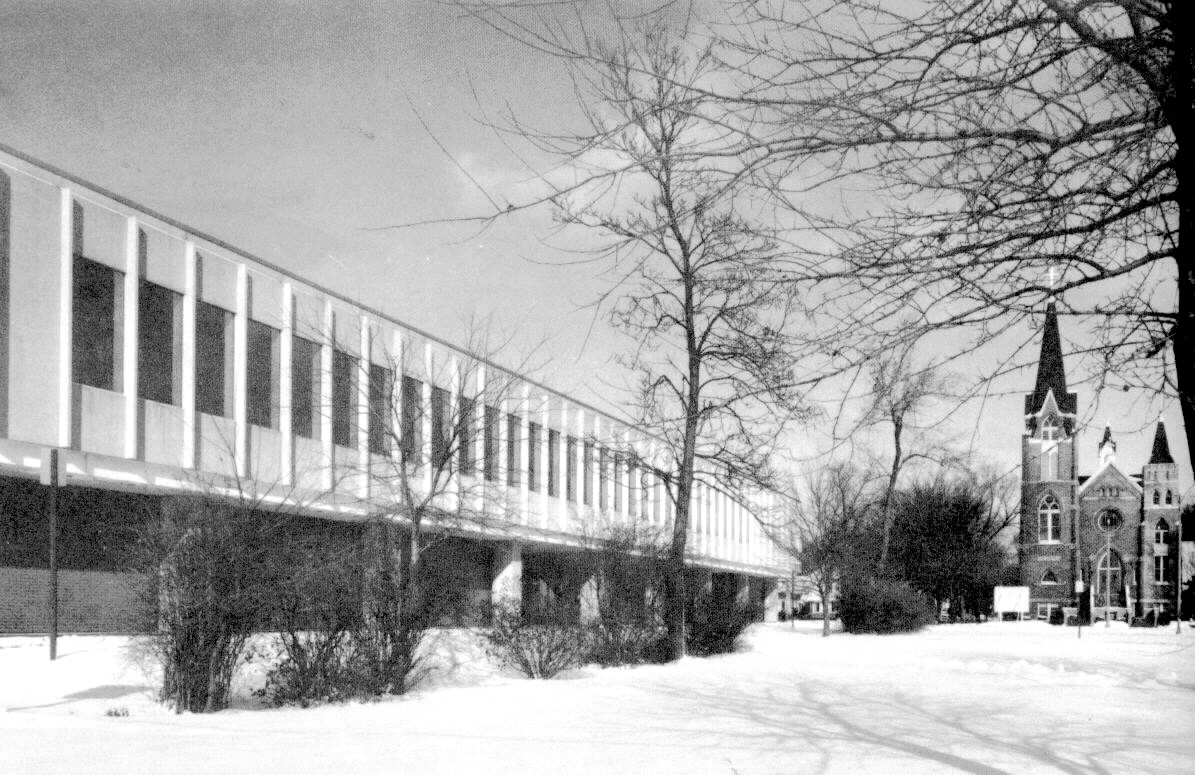 New addition of the nationally-recognized Skokie Public Library, built in 1972
New addition of the nationally-recognized Skokie Public Library, built in 1972
 Inside the library, a youngster uses the computerized card catalog system [Photo by Milton Nidetz]
Inside the library, a youngster uses the computerized card catalog system [Photo by Milton Nidetz]
Mary Radmacher
The Skokie Public Library was quite a different institution when Mary Radmacher left the reference section of the Gary (Indiana) Public Library to become chief librarian back in 1956.
Among the long list of her accomplishments:
The establishment of a bookmobile program in 1957. The first library in the area to invest heavily in paperback books (in the 1950s). The major addition in 1972, which tripled the floor space of the library and included a new auditorium, conference rooms, and a lecture hall. The automation and computerization of the card catalog system. Mary Radmacher retired as chief librarian in 1987, after 29 years of exceptional service to the library and the community.
 Former chief librarian Mary Radmacher
Former chief librarian Mary Radmacher
The Petty Auditorium
The Petty Auditorium, a 200-seat theater on the first floor of the Skokie Public Library, was an important feature of the major 1972 addition to the library.
The auditorium was named in honor of Selma Martinson Regan Petty, who was elected to the first library board in 1942 and served on every subsequent board until poor health forced her to resign in 1972.
Selma Petty moved to Niles Center in 1926 and remained a resident until her death in 1979. She was also a charter member and the second president of the Cosmos Club, second president of the American Legion Women’s Auxiliary, and a president of St. Peter’s Catholic Christian Mothers Club.